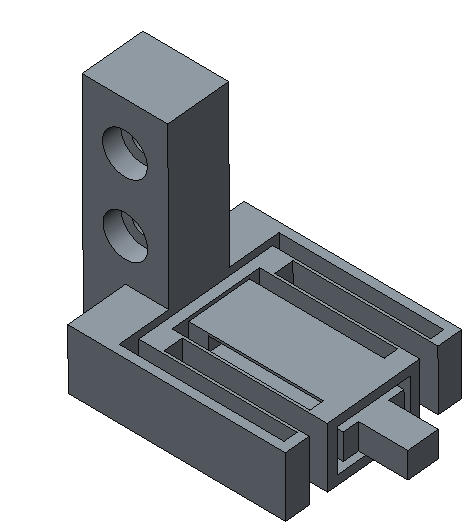Non-Destructive Additive Manufacturing Characterization Coupon
Additive manufacturing (AM) material assurance has relied upon traditional test coupons and testing methods which work well for wrought materials, but fail to address the unique and not as well-known characteristics of AM parts. Sandia engineers have been working on a new standardized, integrated test coupon specifically designed for AM that allows for non-destructive testing of material properties, allowing for repeated testing through a series of environments in order to characterize part reliability.

This new multi-axis linear flexural cantilever test coupon is designed as one continuous part with no assembly required and can be printed using a variety of materials and AM methods. The linear flexure design enables simplified vibration (modal) analysis of structure-property information, and the multi-axis aspect of the design allows for determination of inhomogeneity in printed materials. Using various sensors, a non-destructive modal analysis measures time-dependent evolution of position following the convection of an impulse to the cantilever system, one axis at a time. Analysis of this data can be used to determine structural-property information, such as Young’s modulus, damping coefficient, stiffness, shear modulus, and deviations from normal response pointing to microstructural defects. Due to the non-destructive nature of this testing, repeat studies of the same part can be carried out in varying conditions. This allows for an analysis of the impact on the structural-properties of the specimen before, during, and after exposure to varying environments. Non-destructive modal testing techniques also lead to more accurate data. Sandia’s AM test coupon offers testing of a number of different mechanical properties that can lead to a better understanding of the unique microstructures associated with additive manufactured parts.
Benefits
- Test artifact can be printed using a variety of materials (metals, ceramics, plastics) and different AM methods
- Allows repeated testing of a material in various environments
- Offers testing of a large set of mechanical properties
- Modal testing technique results in extreme testing accuracy
Applications and Industries
- Additive manufacturing
SD#14044
Published8/8/2017
Last Updated8/8/2017